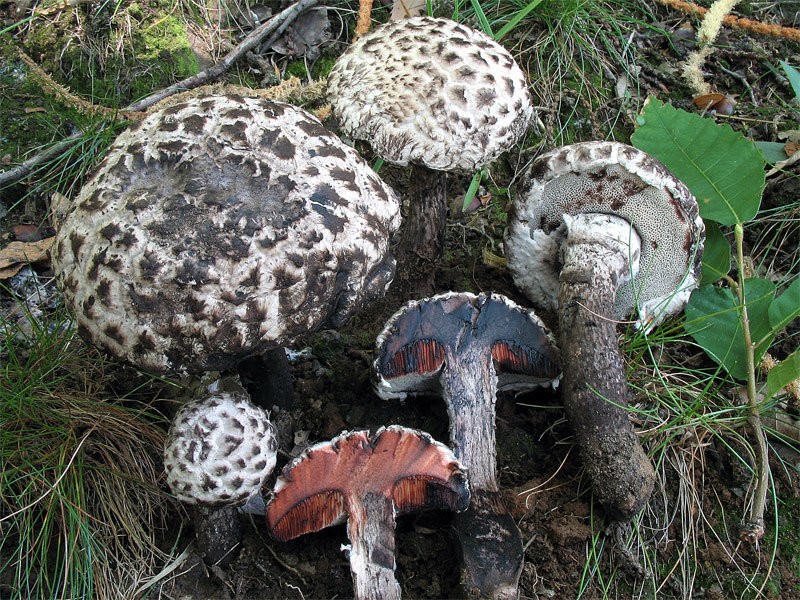Strobilomyces floccopus (Strobilomyces floccopus)
- Vaega: Basidiomycota (Basidiomycetes)
- Vaevaega: Agaricomycotina (Agaricomycetes)
- Vasega: Agaricomycetes (Agaricomycetes)
- Vasega laiti: Agaricomycetidae (Agaricomycetes)
- Poloaiga: Boletales (Boletales)
- Aiga: Boletaceae (Boletaceae)
- Genus: Strobilomyces (Strobilomyces or Shishkogrib)
- ituaiga: Strobilomyces floccopus

ulu
The cone mushroom has a convex hat in appearance resembling a pine cone. The cap of the mushroom is 5-12 cm in diameter, gray-brown or black-brown in color, all covered with scales arranged like chips on the roof.
Hymenophore
Grown slightly descending tubules 1-1,5 cm long. The margins of tubules are whitish at first, covered with a grey-white spathe, then gray to greyish-olive-brown, turning black when pressed.
Feeseeseaiga
Among the boletes, the cone fungus is an exception not only in appearance, but also in the microscopic structure of the spores. Its spores are violet-brown (black-brown), spherical, with a somewhat thickened wall and a noticeable net-like ornament on the surface (10-13 / 9-10 microns).
vae
A strong leg measuring 7-15 / 1-3 cm, the same color as the hat, is covered with coarse fibrous scales. The base of the stem is often rooted.
Pulp
The flesh of the cone mushroom is whitish, on the cut it acquires a reddish tint gradually turning into black-violet. A drop of FeSO4 colors it in a dark blue-violet tone. Taste and smell of mushrooms.
Nofoaga
The cone fungus is widespread throughout the temperate zone of the northern hemisphere, and was apparently brought into the southern. It grows in summer and autumn in coniferous and deciduous forests, preferring hills and acidic soils. In the lowlands, it forms mycorrhiza with beeches, and in higher places it grows under spruces and firs. Fruiting singly or in small groups.
Mea'ai
The flaky-legged cone mushroom is not poisonous, but the old hard legs are poorly digested. In Germany it is recognized as inedible, in America it is classified as a good mushroom, in most European countries it is harvested, but it is considered maualalo le lelei.
Ituaiga tutusa
In Europe, only one representative of the genus grows. In North America, the closely related Strobilomyces confuses is found, which is smaller and has a wrinkled rather than reticulate spore surface. Most of the other species are characteristic of the tropics.









